— By Freya Herring
For rapidly growing furniture maker Jardan, a longstanding commitment to responsible manufacturing—exemplified at its new Melbourne headquarters—materialises in a distinctly Australian aesthetic.
In the realm of design, to be considered a contributor to the Australian aesthetic is no mean feat. For Jardan—the family-run furniture company celebrated for its homegrown character—such an achievement is centred as much in ethos and approach as on the look and feel of its products. Visually, there is a lightness and brightness to the materiality and form of Jardan furniture that suits the Australian air. You might say that each Jardan piece embodies the kind of national archetype we all wish to be—chilled-out yet aspirational, eco-conscious and intelligent, beautiful to look at and beautiful underneath.
The furniture is showcased in retail spaces that feel at once like walking into the pages of a magazine and into your neighbour’s home; you feel like you could sit down with a cuppa and read the paper before realising you are, in fact, in a shop. But perhaps what makes Jardan feel truly Australian is that it has always been designed and manufactured here, with great devotion to the landscape and local lifestyle.
“Part of [our inspiration] is the Australian attitude to life, which is unassuming, approachable, relaxed and playful,” suggests Jardan co-managing director Nick Garnham. “We don’t have the buildings they have in Europe. Instead, there is a lot of great contemporary architecture in Australia—really modern spaces in our rugged landscape.” Creative director Renee Garnham, Nick’s wife, has observed a difference in colours and textures too. “I do notice that what sells in Europe are those darker, richer colours,” she says. “People tend to go for a light tone over here; it’s a very different colour palette, more relaxed.”
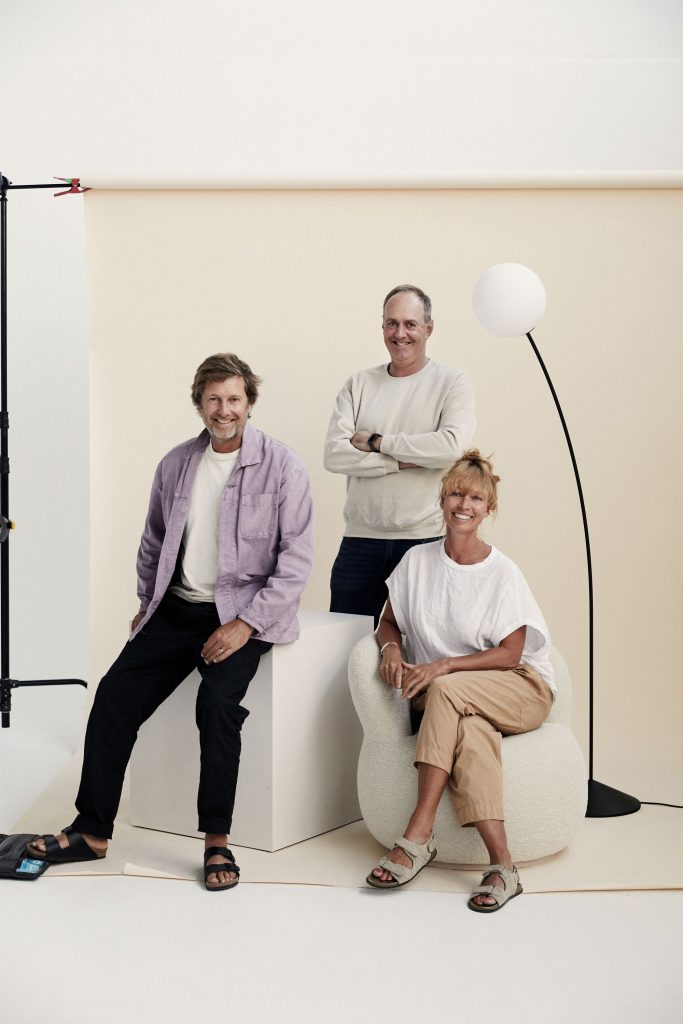
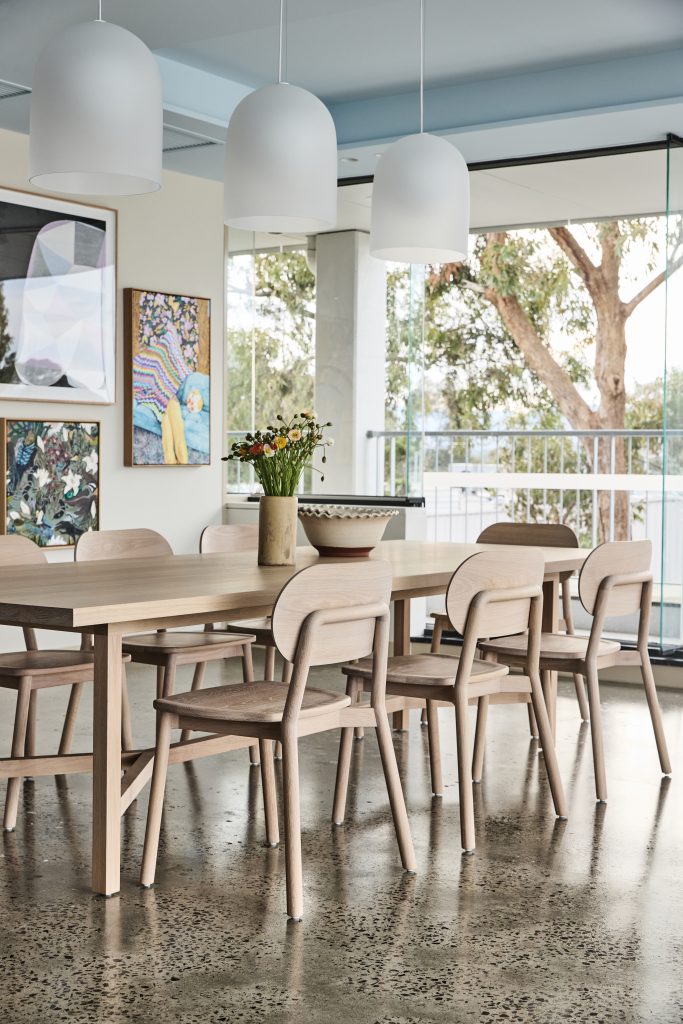
The Jardan aesthetic is coveted by everyone from Sydney beachgoers to Silicon Valley billionaires. And while Jardan collections run the gamut of furniture and homewares, from chairs and tables through to ceramics and bed linen, the brand is perhaps best known for its sofas—sizeable, smart and shapely modulars in a range of textured fibres and nature-inspired colours. Contemporary furniture often looks exciting but is rarely very comfortable. There is something inherently inviting and restful about the Jardan look, from the curvaceous waves of the Valley sofa and the nebulous form of the Ziggy ottoman to the sloping cushions of the Wilfred armchair, which envelop its timber arms as if embracing the chair’s hard form with a hug. The Nook sofa’s loose cushioning—and even its name—radiates laidback vibrations, while the Sunny bed, with its natural, stonewashed linen upholstery, gives off an easy coastal elegance.
These visual qualities are underpinned by the brand’s origin story, which has family and locality at its heart. Jardan began under different ownership in 1987 as a traditional upholstery business based in Hawthorn. In 1997, while Nick was working in its eight person team, an opportunity arose to buy it. Together with his brother Michael and father Barry, he purchased the business with a view to transforming it into a design furniture wholesaler. The Garnhams started off small, but it wasn’t long before Nick realised he had a flair for design. Later, Renee left her job in the fashion industry to join the team, and the business began to expand.
“I came in about 16 years ago,” Renee recalls. “Nick and his brother were producing these beautiful couches, and designers were coming in and choosing their fabrics and loving what they were making. Then we purchased the timber factory [to begin] making timber pieces and I started picking different fabrics, working on the colours and bringing [the brand] to life a bit more.”
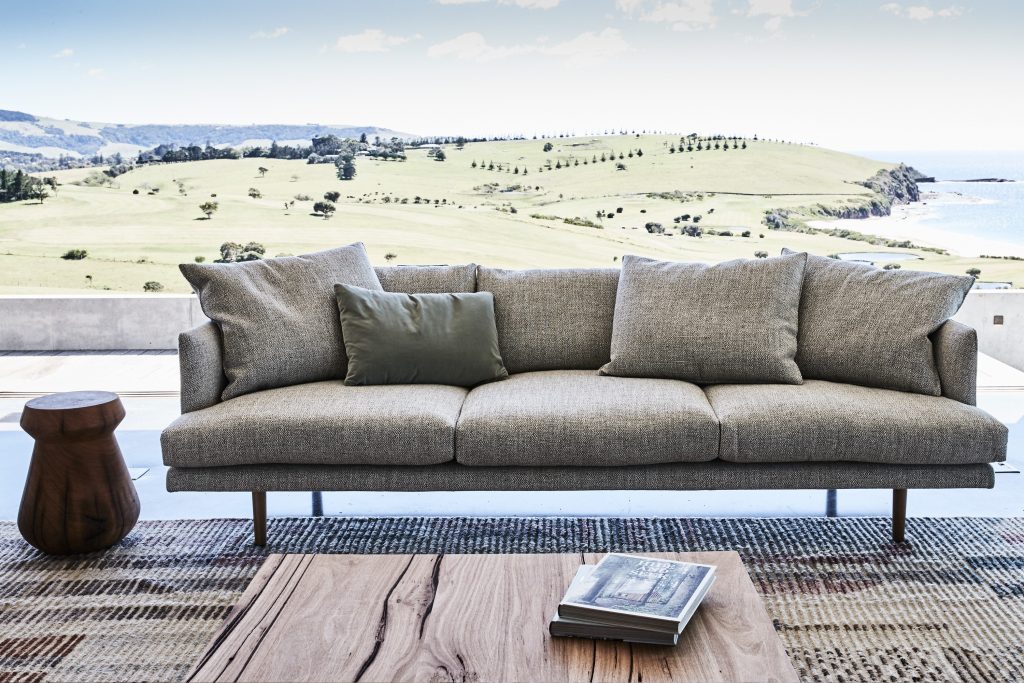
As Jardan gained popularity, Renee recognised a need to adapt. “When I was just starting out, we had a small room in the factory and I noticed a lot of designers would come in with their clients and be like ‘I can’t visualise the sofa in the space,’” she explains. “I wanted to create that space where people were inspired. I really felt that we should go retail instead of wholesale. We launched the retail stores in 2014 and took it from there.” Jardan’s flagship opened on Melbourne’s Church Street that year, with Sydney opening a few years later, followed by Brisbane and Perth. A Byron Bay store is due to open in February.
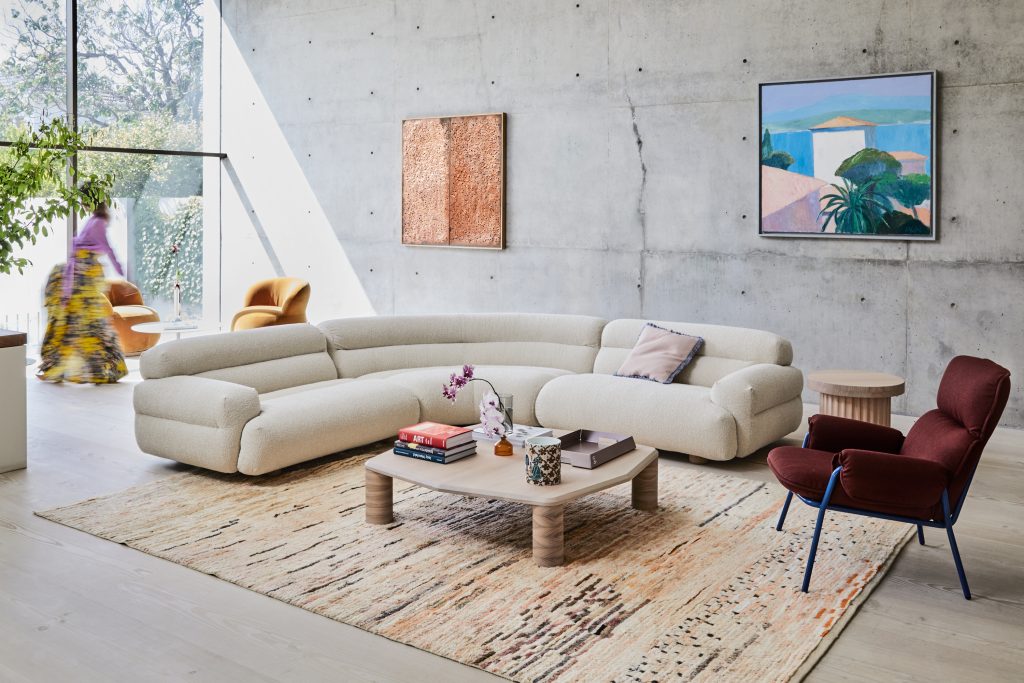
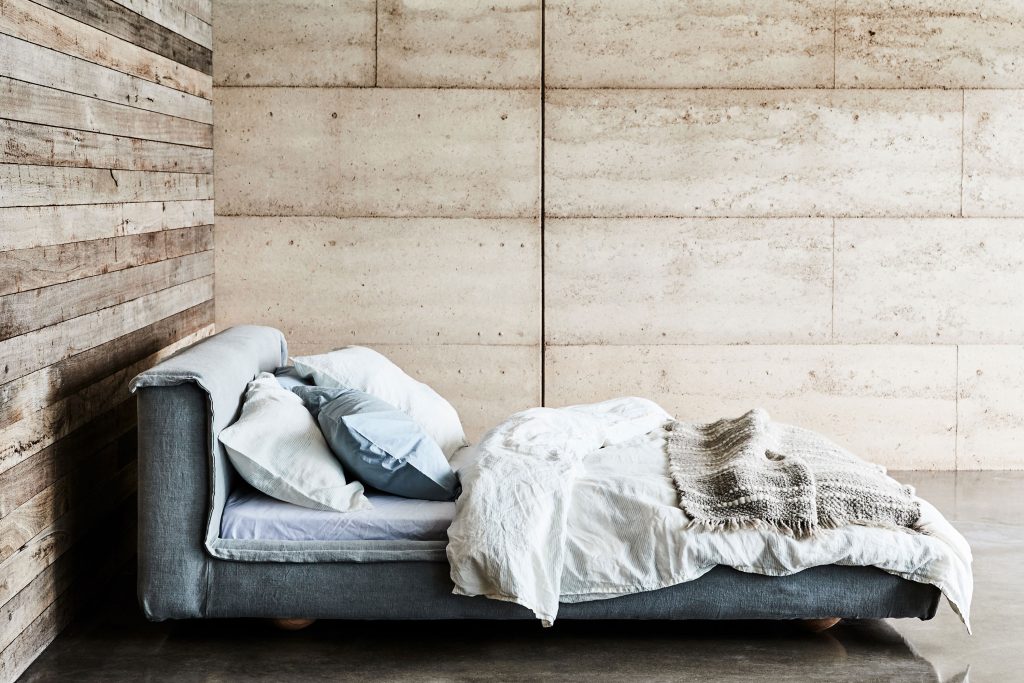
Nick says: “We had [a vision to] do a store like no other, so our first store felt more like a home. It had a beautiful kitchen, it had a fireplace, it was very welcoming. It wasn’t just a generic furniture store. It had art, sculpture and colour, with local stone and timbers. It was unique in the furniture space at that time [in Australia]—we reimagined what a furniture store would look and feel like for us. We wanted it to be approachable, and really tactile; to have a lot of integrity and have beautiful artisanal work from around the world, and then all of our lovely textures. [We wanted to] create a unique Australian aesthetic around that story.”
Today, every store looks different, reflective of the community it slots into. “With every fitout we really go to the nth degree with the architecture and local narrative, being sympathetic to that region or that building with a nice design arc around how we live in and fit into that community,” he adds.
“We like to be a part of the communities where we open our stores; we get to know the people who live there.”
Jardan’s local manufacturing also cuts against the grain in an industry that largely produces offshore to maximise profits. In 2023, Jardan opened a new 16,000sqm factory and headquarters in Melbourne’s Scoresby, combining its upholsterers, timber factories and offices. From here the team can design, make, and photograph new products all in one place, enabling enhanced collaboration and efficiency. “In a couple of weeks, we can go from a concept to a realised prototype, and that’s where the real buzz comes from in this new space,” Nick enthuses.
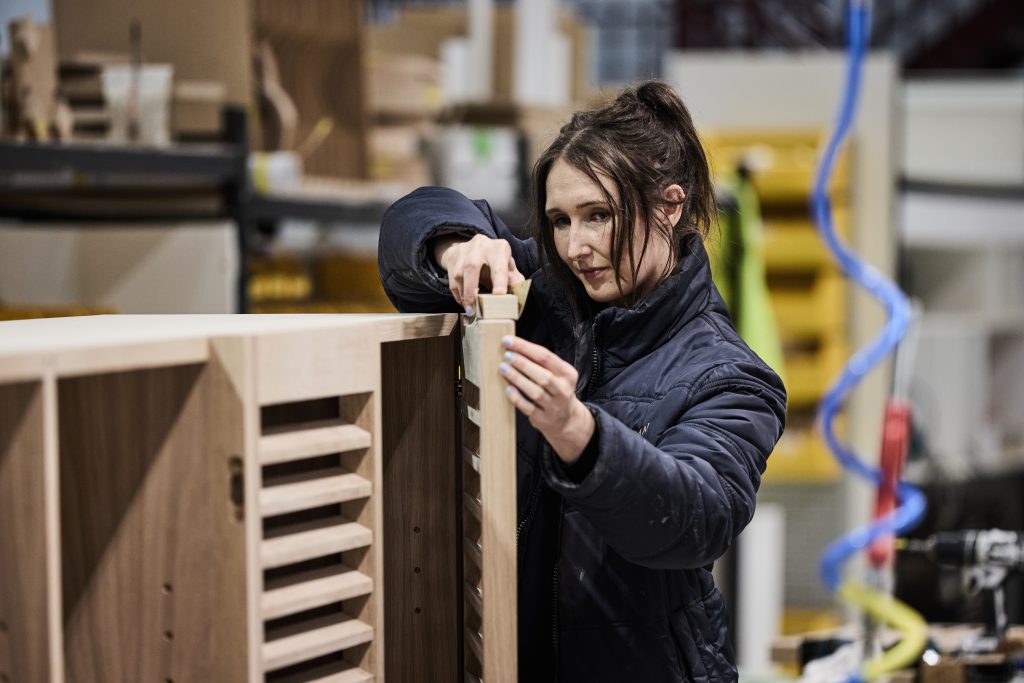
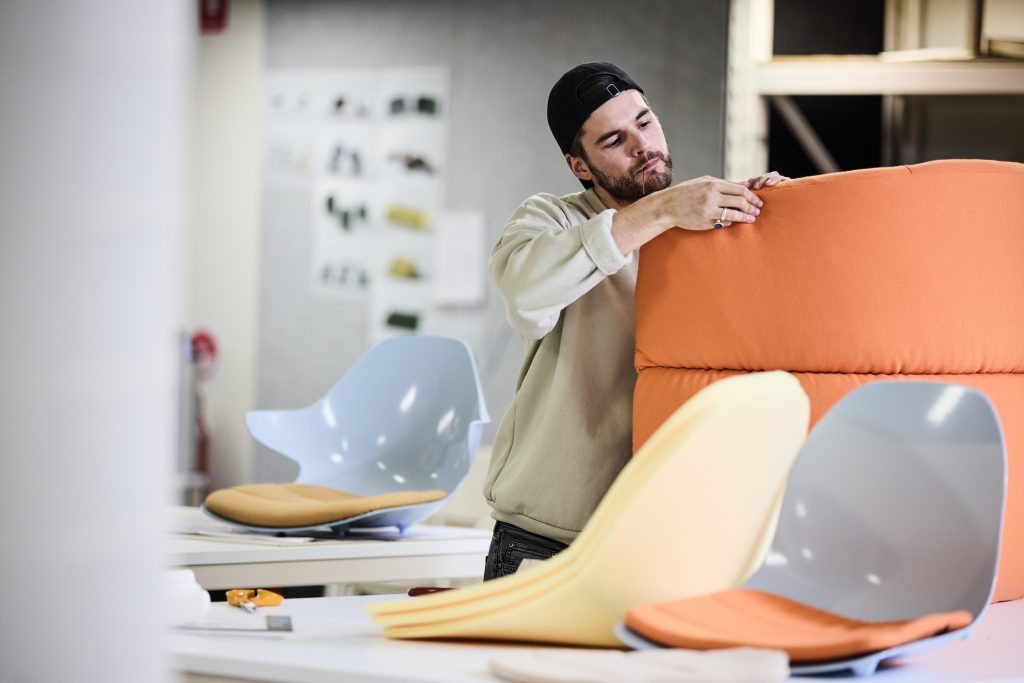
The dedicated factory is a major milestone for the company and facilitates the continued deepening of Jardan’s commitment to responsible manufacturing. “We are carbon neutral [as certified by] Climate Active, we recycle, we upcycle. We really want to get towards net zero, and with this new factory, we’re getting really close,” Nick says. “For example, we used to send a lot of offcut timber to landfill, and now we’re shredding the timbers and capturing the sawdust offcuts to produce solid hardwood timber briquettes, which then can be sold for people to use to warm their homes instead of virgin timbers.” Meanwhile, the fabric scraps that come with manufacturing Jardan sofas are now repurposed, and a stewardship initiative ensures products can be recycled or upcycled at the end of their lifecycles.
This might be one of the company’s biggest differentiators: its environmental intentions are backed up by action. As keen surfers who spend much of their free time in nature, Nick says it felt crucial for him and his brother to embark on the sustainability journey. “We didn’t want to be involved in a business that was just going to do low quality furniture that ends up in landfill; that was really the antithesis of what we wanted. We wanted to create something we could be really proud of.” Now, with more than 200 employees, the capacity to double production and a fiercely loyal following among architects and interior stylists, it seems this Australian story is only just beginning.
